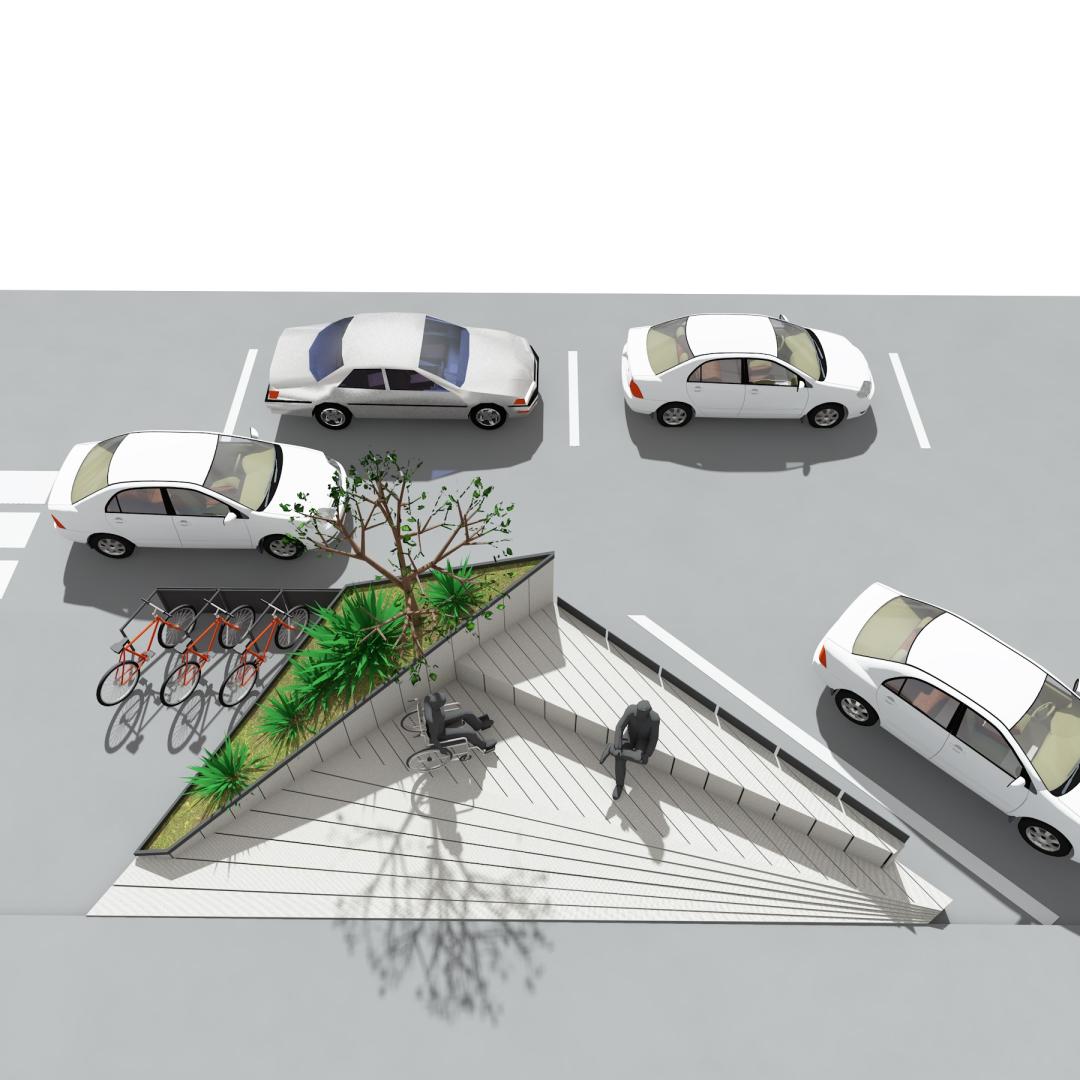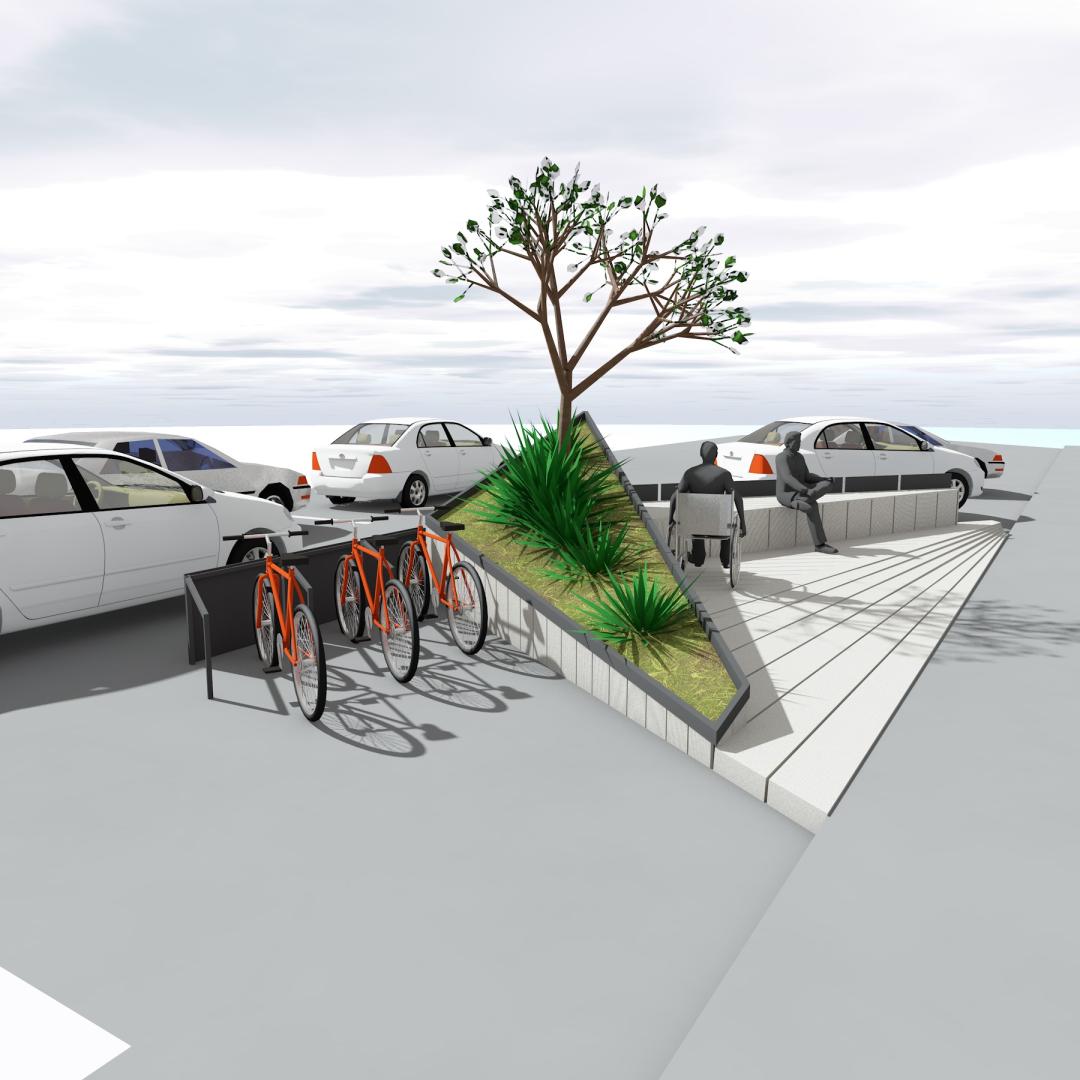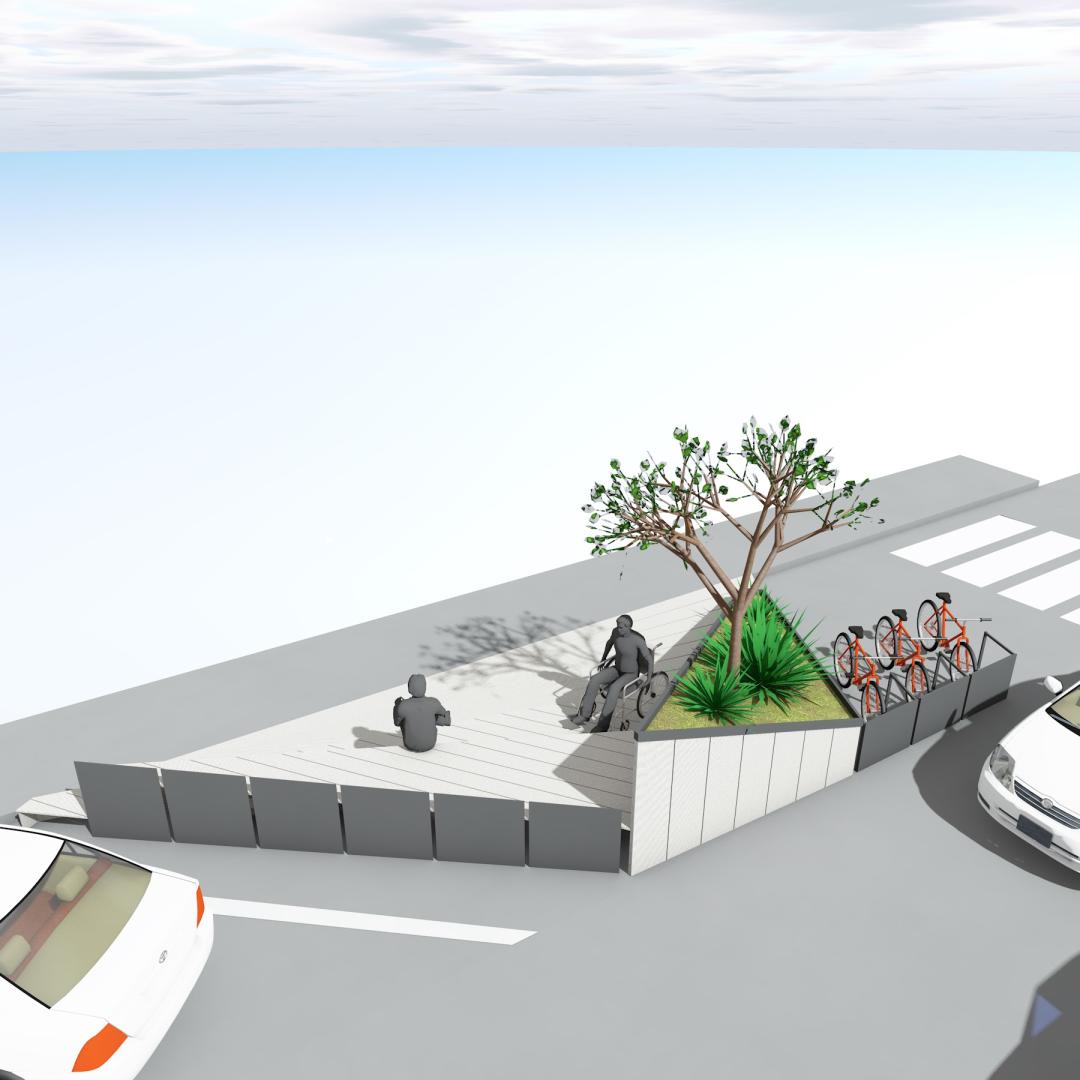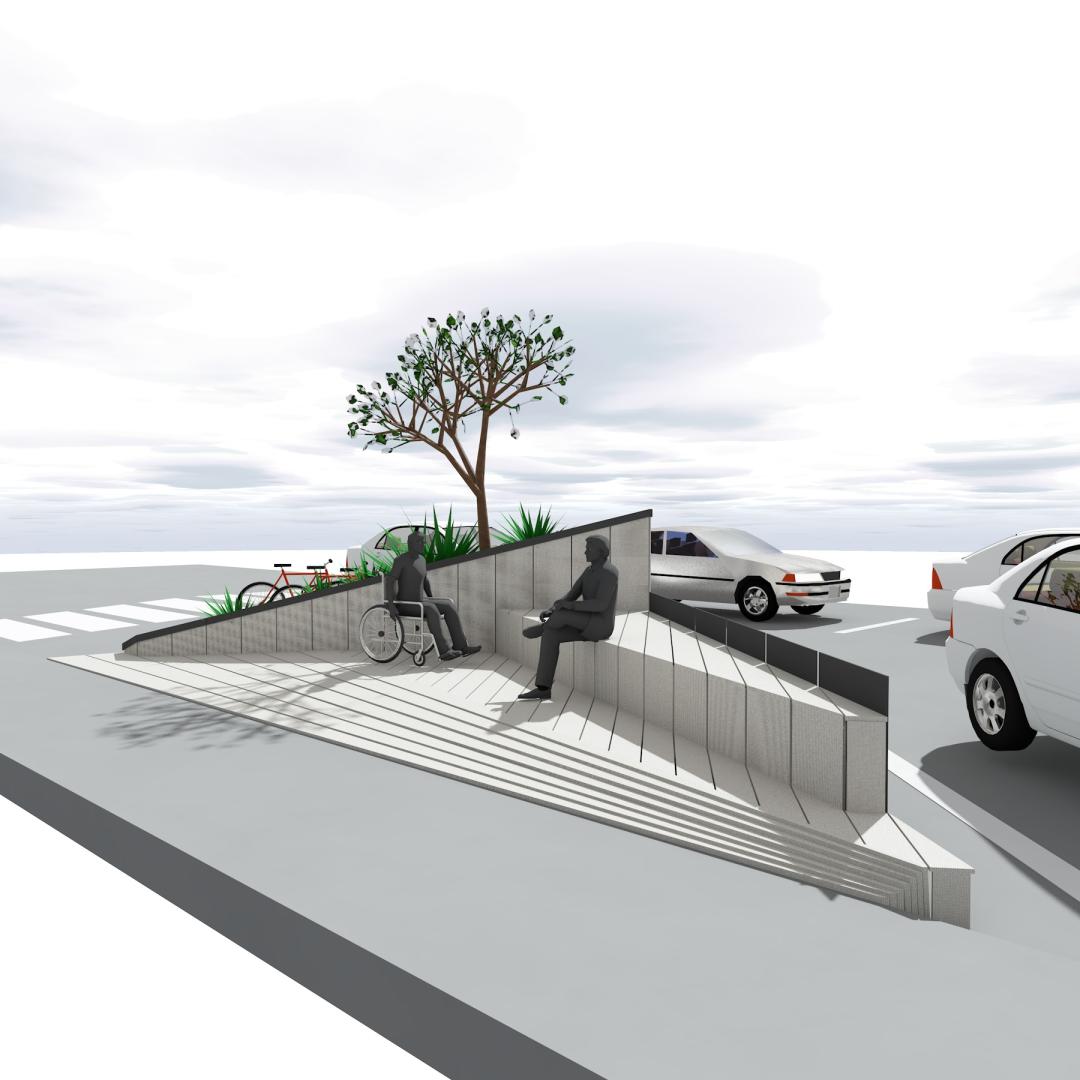Poreč Living streets parklets
Basic information
Project Title
Full project title
Category
Project Description
"If you can change the street, you can change the world." (Janette Sadik-Khan)
Poreč Living streets parklets - elements of urban space transformation in the service of achieving European energy policy goals, and as an intervention for healthy community.
Project Region
EU Programme or fund
Which funds
Other Funds
''Poreč Living streets'' project has seized the opportunity of destinated pilot financing within the ''European Climate Initiative (EUKI) – Living Streets and Citizen Engagement in local energy and climate projects'' (from 01.11.2019. until 31.12.2021.) which is coordinated by Energy Cities and implemented by Terra Hub, OesteSustentável and Sustainable City and funded by the German Federal Ministry for the Environment, Nature Conservation and Nuclear Safety (hereinafter referred to as .BMU") within the framework of the EUKI programme.
Description of the project
Summary
Energy and climate goals of the European Union are becoming more and more ambitious every year.
The European Union's energy and climate 2020 package included the so-called 20-20-20 goals, the same, 2030 package includes targets for a 40% reduction in CO2 emissions, while 2050 is the year in which the EU should achieve climate neutrality.
It is estimated that by 2050, two-thirds of the world’s population will live in urban areas. Today, there are nearly 800 million vehicles on the roads around the world, and that number could double in number by 2030. Therefore, transport represents one of the key problems that affect the quality of the environment but also the quality of life in urban areas, while undermining the sense of community within the neighborhood.
''Poreč Living Streets'' is a project through which citizens are helped, and at the same time encouraged, to free their own streets from the crowds created by cars. By removing cars from the streets, new spaces become available that can be turned into spaces that serve citizens, rather than cars. The aim of the project is to turn the streets into living laboratories in order to solve a number of issues, such as finding sustainable transport solutions and ways to organize the daily life without the use of cars at the extent they are used today and to convert them into socializing spaces.
By introducing the PARKLET concept on the streets of Poreč–Parenzo, the project aims, in cooperation with citizens, to encourage participatory engagement of local population, to systematically introduce long-term micro-transformations of city streets and spaces that are often congested with traffic and cars, especially during the Summer months, to point out the importance of public space in urban areas and encourage lower rate of use of personal vehicles, as well as to encourage other, sustainable mobility means, and create urban spaces that will no longer serve to cars but to citizens.
Key objectives for sustainability
Town of Poreč-Parenzo is determined to pursue the path of ''opening up'', by focusing on participatory engagement of local population. The long-term goal of the project is to examine the opinion of citizens on devising the most acceptable solution for permanent closure of individual streets (streets that over the past period have proven to be "congested" with traffic and parked vehicles, and which have, partially or entirely, lost their original purpose) in the city area for vehicle traffic. Also, one of the long-term goals of the project is the institutionalization of pro-cycling and pro-pedestrian policy and its integration into local transport and spatial planning policies, as well as networking of key stakeholders at local, national and even European level. In addition, this project aims to promote better integration of walking, hiking and cycling in the tourist offer with the aim of improving the image of the city, improving mobility and accessibility, and responsibility in environmental protection and human health.
Using local resources, materials and labor for the events and workshops (the Institute for Agriculture and Tourism Poreč will grow seedlings that will be given to citizens within workshops), and using existing equipment from city organizations and institutions (pedal cinema will use old bicycles that will be repaired and put back into operation), i.e. reducing the purchase of new equipment to the lowest possible level and consumption of additional resources, as well as the creation of additional, unnecessary, waste, will ensure quality and above all, for all participants and project implementer's education on sustainability in project implementation.
Also, all activities to be carried out as part of the project will have nearly zero electricity consumption (pedal cinema, acoustic concerts, etc.), while visitors will be invited to join all project activities, events and workshops on foot or by bicycle.
Key objectives for aesthetics and quality
The World Health Organization's definition of health provides an appropriate, broad-reaching understanding of health as a "resource for everyday life, not the object of living".
Both the opportunities available to individuals and the choices made based on those opportunities impact individual, family, and community health. A number of reports show evidence on how people's health and wellbeing are impacted by where one lives and the opportunities available to them.
Small interventions in urban spaces, like PARKLETs can represent, new, city "living rooms" and thus encourage citizens to socialize, communicate and express opinions on ways how to improve the quality of life in the city. On the other hand, encouraging citizens to participate, and by giving voice to the community we create a dialogue channel that has the power of transforming entire neighborhoods into sustainable, community friendly, healthy and thriving communities. Once, having achieved this, we can say that we will be on the right path of addressing a much more complex theme of placemaking which has become one of the key themes of sustainable urban development.
By conducting pilot activities of temporary closure of streets for vehicle traffic and examining citizens' opinions on it, their involvement in decision-making on spatial planning and management in their city, as well as their systematic awareness of the benefits of cycling, walking and the concept of sustainable urban mobility, as well as encouraging a constructive debate on the establishment of functional urban transport, will have a significant impact on the local climate in the very near future.
Key objectives for inclusion
“Cities have the capability of providing something for everybody, only because, and only when, they are created by everybody.”-Jane Jacobs
Moreover, the definition of PARKLET states: ''PARKLET fulfills an important function: in addition to encouraging socialization, it also represents a public space accessible to all.''
The role of cities in climate change is huge. Cities are home to about 54% of the global population, they consume about 70% of energy and produce about 75% of GHG emissions. By 2050, up to 68% of the global population will live in urban areas, which means that resource consumption in these areas will also increase. Yet, in addition to cities representing a huge consumption of resources, they are also a very sustainable invention. People live and work nearby which allows sustainable mobility, shorter travel from home to work, smaller homes with lower electricity consumption. Therefore, urban environments, if their population density is properly distributed, are more sustainable than suburban settlements.
And this was our guiding thought, to make our city and its streets more sustainable, to reclaim the urban space taken over by cars and make it available and accessible to all our citizens.
PARKLET design was very thoroughly thought through. It made it accessible to people with disabilities, made it safe and usable for all age categories, from the youngest to the oldest ones and provided security for the ones using it. Almost all materials used are natural (wood).
Involvement of numerous stakeholders and workshops designed in a way that they take into consideration all age groups, people with disabilities (within the parking day the workshop seedlings given away to citizens will have signs printed in Braille), various aspects of interest which cover vast area from history, culture, design, gardening and healthy living to climate change mitigation and adaptation, assure equal inclusion of every person, every age group and even our citizen's pets.
Results in relation to category
City streets are much more than spaces that serve mobility, that is, the means we use to get from one point to another in the city. They are much more than just spaces used for parking cars. City streets need to be and must be much more than just vast parking spaces. There is an urgent need to "activate" them, facilitate access for pedestrians and cyclists and implement programs that encourage participatory action by citizens.
City streets are, primarily, public spaces that can and must enrich the social, social and economic fabric of the community, and a very powerful tool, both in education and in achieving the goals of European energy policy.
PARKLET - engl. park + let, by definition, represents an improvised green area that extends from the sidewalk to the pavement, thus occupying several parking spaces and creating more space for people.
Especially in city districts where wide green areas are more of an exception rather than the rule, PARKLETs fulfill manyfold important functions: in addition to representing an open invite for socialization, they also represent a public space accessible to all. On the other hand, they encourage the transformation of streets and spaces that are mostly usurped and congested by traffic and cars, all in order to point out the importance of public space in urban areas.
While PARKING DAY is celebrated internationally in the third week of September, with the aim of mobilizing citizens, organizations, artists, activists to temporarily transform streets and spaces that are mostly usurped and congested with traffic and cars, and all in order to point out the importance of public space in urban areas, City of Poreč - Parenzo will be the first city in the Republic of Croatia to mark the International Parking Day on its streets and on its PARKLET in September 2021.
How Citizens benefit
Due to the fact that the ''Poreč Living streets'' is an ongoing project, it consists of a whole series of activities, workshops, programs and activities that include a vast number of local stakeholders, NGOs and at last, but the most important, citizens of Town of Poreč – Parenzo.
Partners involved in the project implementation are: Zona, association for Improving the quality of life, Institute of Agriculture and Tourism Poreč, Center for providing services in the community Healthy city of Poreč, Association of the Disabled Poreč, Home for the elderly and infirm Poreč, Poreč City Library, Homeland Museum of Poreč, local schools and kindergartens.
Some workshops and activities within the ''Poreč living streets'' project, which will all take place on the PARKLET itself (COVID-19 measures permitting), are as follows:
- ''Research of memories'' workshop, especially among the elderly residents of the city, and in collaboration with the Homeland Museum of Poreč.
- ''Planning the future of the street'' workshop. The results of this activity will be presented as part of the final event in the form of an exhibition and/or presentation.
- ''Garden in a jar'' workshop on growing your own seedlings in collaboration with Institute of Agriculture and Tourism Poreč.
Final event ''Parking day'' will include a whole series of activities for citizens such as: closing of the Zagrebačka streets for vehicle traffic, revitalization of PARKLET and the entire street that has been closed, through landscaping and equipment, and through activities in cooperation with city associations and institutions (PARKLET-reading room, Cinema on pedals - film screening for which uses exclusively electricity produced by pedaling bicycles, distribution of seedlings to citizens with planting instructions as well as workshops for growing their own seedlings in cooperation with the Institute of Agriculture and Tourism, activities and workshops for children).
Innovative character
While PARKLET is an increasingly common phenomenon in both European and cities around the world, the City of Poreč - Parenzo, is the first city in the Republic of Croatia, that introduces the concept of PARKLET into urban spaces, and thus ennobles and restores it, reclaiming its original purpose of serving the citizens.
Being the first Croatian city to start implementing PARKLET concept makes the Town of Poreč-Parenzo a PARKLET pioneer in Croatia and an example of good practice that can be followed by other Croatian cities.
Moreover, having learned from the experience of other European cities, Town of Poreč-Parenzo noted that benefits from PARKLET implementation can be multiplied and PARKLETs can live up to their potentials only if they become a center point of well planned and programmed activities
The innovative character of the ''Poreč Living streets'' project lies within the numerous activities that have been planned around the PARKLET itself (research activities, educational activities, workshops and events), which are organized in order to encourage and motivate citizens to speak up and to be heard, to reclaim the streets, rethink their everyday habits and participate in decision-making processes in their city. These activities are a tool for enabling a simple PARKLET (an element of urban transformation) to become a mean for launching the urban transition of Poreč-Parenzo from a car-centric to people-centric city, and not only that but in the service of achieving European energy policy goals, and as an intervention for healthy community, as well therefore adding an extra value to the project.






